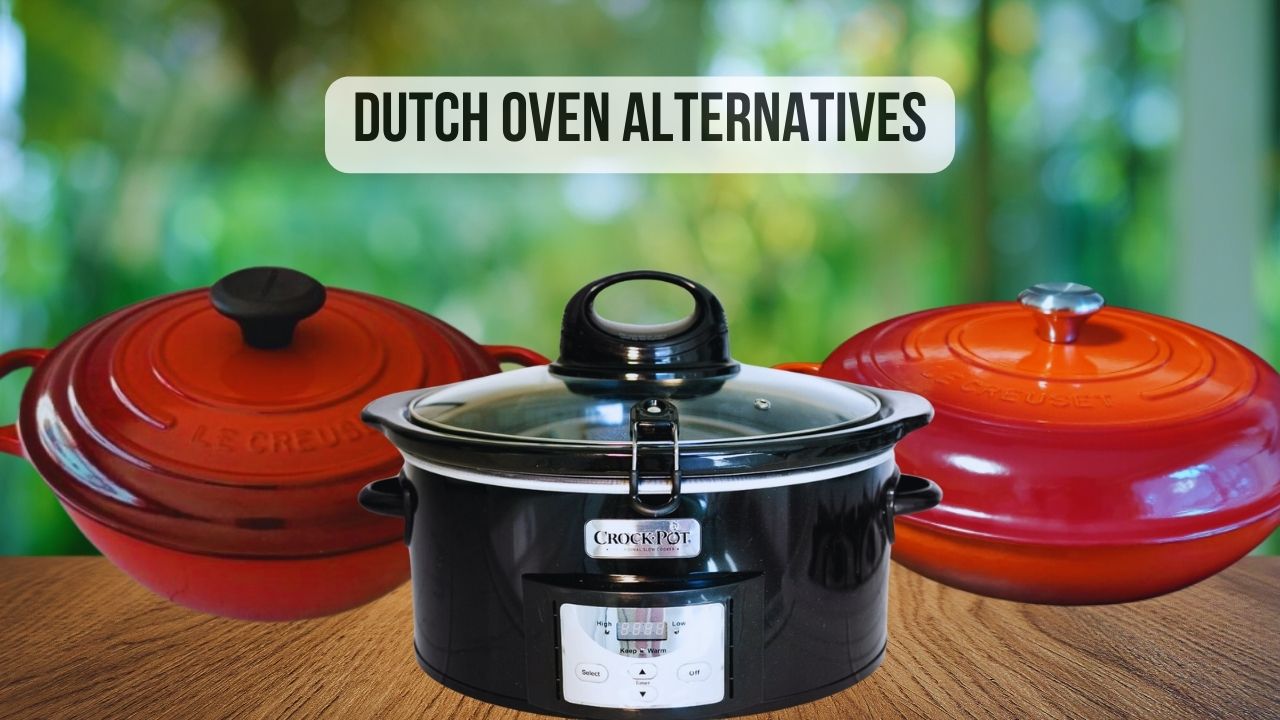The Dutch oven has long been a staple in kitchens worldwide, and I’ve tested many Dutch ovens almost daily throughout my 10+ years as a restaurant chef. I love them for their versatility and that magical ability to distribute heat evenly. But I know not everyone has one in their kitchen arsenal, and I’ve had many home cooks ask me about Dutch oven alternatives when they’re working with limited space or budget.
After testing dozens of options in both professional and home kitchens, I’m excited to share my favorite Dutch oven alternatives with you. I’ve personally used each of these substitutes to create restaurant-quality dishes, and I’ll show you exactly how these alternatives can handle many of the same cooking techniques you’d use a Dutch oven for. Have you been putting off a recipe because it calls for a Dutch oven? Let me help you find the perfect solution in your kitchen right now!
Slow Cooker or Crock-Pot
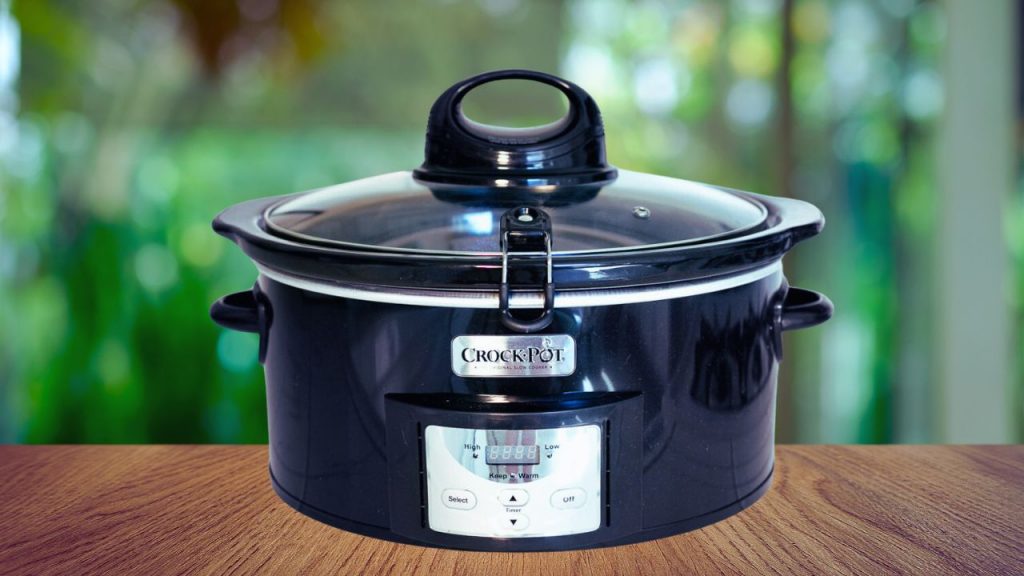
One of the closest alternatives to a Dutch oven is the slow cooker or Crock-Pot. These appliances are designed to simmer food over an extended period, making them ideal for stews, soups, and braises – tasks that a Dutch oven excels at. Simply transfer your ingredients to the slow cooker, set the temperature, and let it work its magic.
- Price Range: $30-$150
- Temperature Limitations: Limited to low (200°F) and high (300°F) settings
- Size Comparison: A 6-quart slow cooker can substitute for a 5-7 quart Dutch oven
- Best For: Set-it-and-forget-it cooking when you can’t monitor your dish
- Where to Get It: It’s available on Amazon in this category
Recommended Recipes:
Braiser
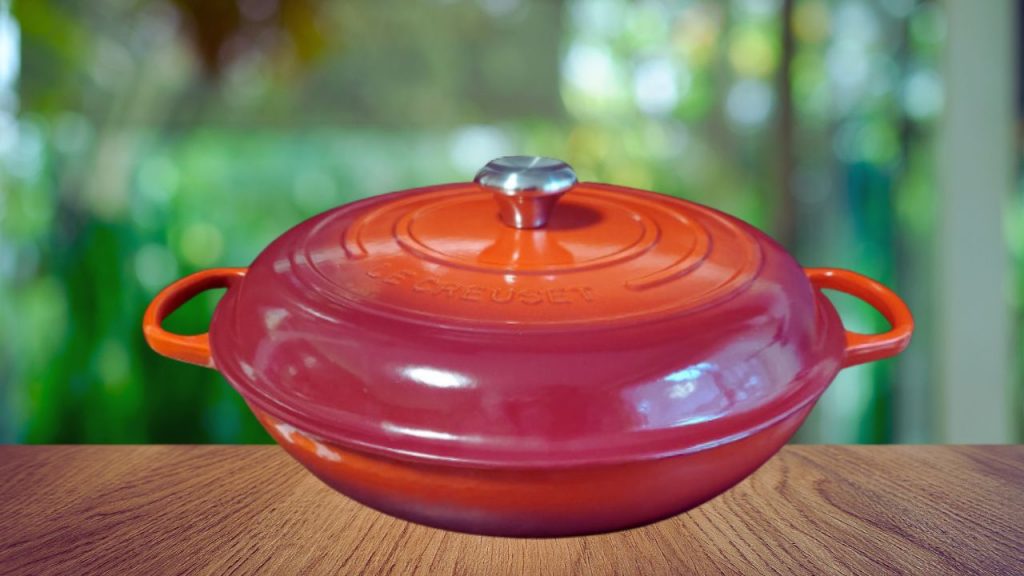
A braiser is another excellent substitute for a Dutch oven. It shares similarities in terms of shape and functionality, with a wide base and tall sides. The main difference is that a braiser usually comes with a tight-fitting lid specifically designed for slow cooking and braising. A braiser’s even heat distribution and retention properties make it a reliable choice for dishes that require low and slow cooking.
- Price Range: $80-$350
- Temperature Limitations: Oven-safe up to 500°F typically
- Size Comparison: A 3.5-quart braiser can substitute for a 5-quart Dutch oven for most recipes
- Best For: Dishes requiring more surface area for browning but less depth
- Where to Get It: It’s available on Amazon in this category
Recommended Recipes:
Cast Iron Skillet with Lid
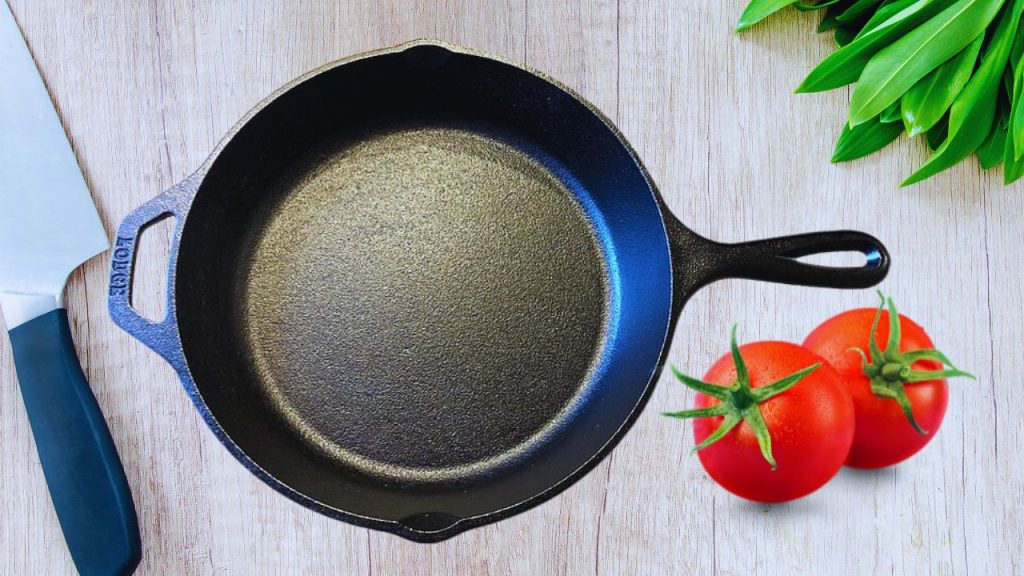
While it may not have the same depth as a Dutch oven, a cast iron skillet can still be used for braising, simmering, and baking. I’ve relied on cast iron skillets as an alternative to Dutch oven countless times in my restaurant kitchen when all our Dutch ovens were in use. The exceptional heat retention and distribution make these workhorses suitable for many recipes that typically call for a Dutch oven.
In my professional experience, a deep cast iron skillet with a good lid can handle about 70% of Dutch oven recipes with minor adjustments. The key is finding one with higher walls (at least 2-3 inches deep) and a tight-fitting lid to trap moisture. I particularly love how cast iron develops that beautiful natural non-stick patina over time – something we prize in professional kitchens.
For a truly investment-worthy option, I recommend Smithey cast iron. I’ve used their skillets for years in my restaurants, and they’ve never disappointed. Smithey’s craftsmanship rivals vintage pieces, with smoother cooking surfaces and perfect weight distribution. Yes, they’re pricier than some alternatives, but they’ll outlast most cookware in your kitchen.
- Price Range: $20-$200 (Smithey options typically $160-$240)
- Temperature Limitations: Oven-safe up to 500°F or higher
- Size Comparison: A 12-inch deep skillet can substitute for a small 4-quart Dutch oven
- Best For: Dishes that require intense searing before slow cooking
- Where to Get It: on Smithey official website
Recommended Recipes:
- Skillet Cornbread (the crust you’ll get is actually superior to Dutch oven versions)
- One-Pan Chicken Thighs with Vegetables
- Skillet Lasagna (my personal favorite Dutch oven alternative recipe)
Casserole Dish
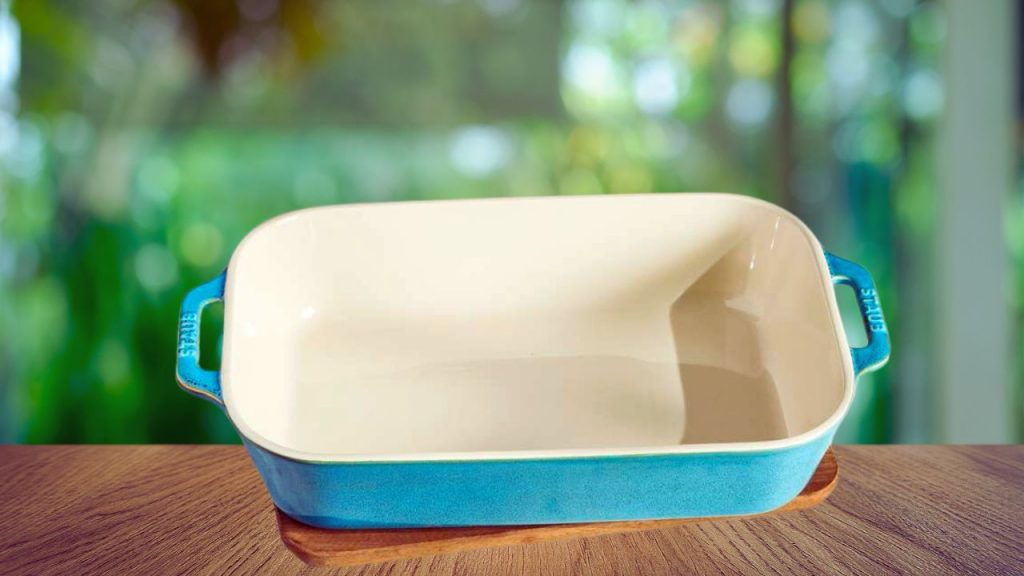
A casserole dish is an accessible alternative for those without a Dutch oven. Choose a heavy-duty option, preferably one with a lid or the ability to be covered tightly with aluminum foil. Casserole dishes are excellent for oven-baked dishes and can handle slow-cooking methods, making them versatile for various recipes.
- Price Range: $15-$80
- Temperature Limitations: Most ceramic options safe up to 450°F
- Size Comparison: A 9×13-inch casserole dish approximates a 6-quart Dutch oven’s capacity
- Best For: Oven-only cooking (not suitable for stovetop)
- Where to Get It: It’s available on Amazon in this category
Recommended Recipes:
Enamel-coated Cast Iron Pot
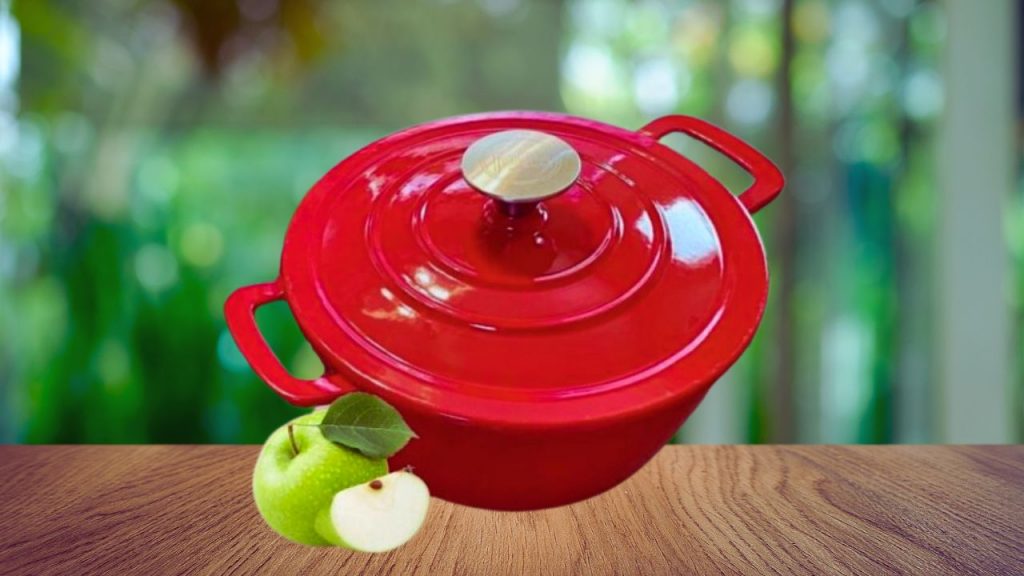
An enamel-coated cast iron pot offers the benefits of traditional cast iron, such as excellent heat retention and distribution, with the bonus of an easy-to-clean, non-stick enamel surface. This makes it a suitable substitute for a Dutch oven, especially when it comes to braising, roasting, and slow cooking.
- Price Range: $50-$400
- Temperature Limitations: Typically oven-safe up to 450-500°F
- Size Comparison: Direct substitute in the same sizes as Dutch ovens
- Best For: Acidic dishes where regular cast iron might react
- Where to Get It: It’s available on Amazon in this category
Recommended Recipes:
- Tomato-based stews
- Sourdough bread
Oven-Safe Soup Pot
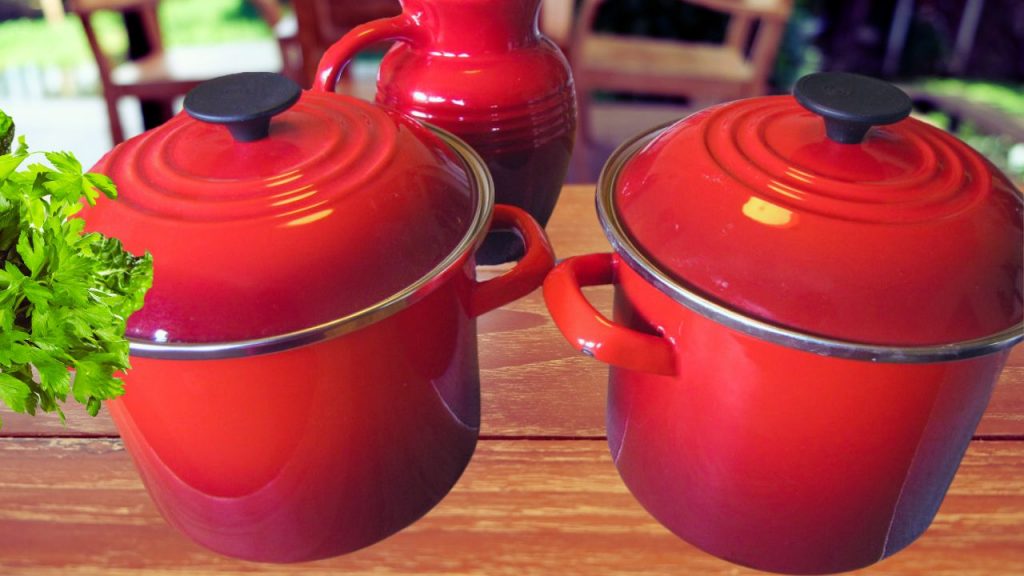
A heavy-duty, oven-safe soup pot with a tight-fitting lid can also step in as a Dutch oven substitute. Look for pots made from materials like stainless steel or aluminum for efficient heat conduction and retention.
- Price Range: $40-$200
- Temperature Limitations: Stainless steel versions typically oven-safe to 500°F
- Size Comparison: A 6-quart soup pot directly substitutes for a 6-quart Dutch oven
- Best For: Liquid-heavy dishes like soups and stews
- Where to Get It: It’s available on Amazon in this category
Recommended Recipes:
- French Onion Soup
- Chicken and Dumplings
Clay Pot
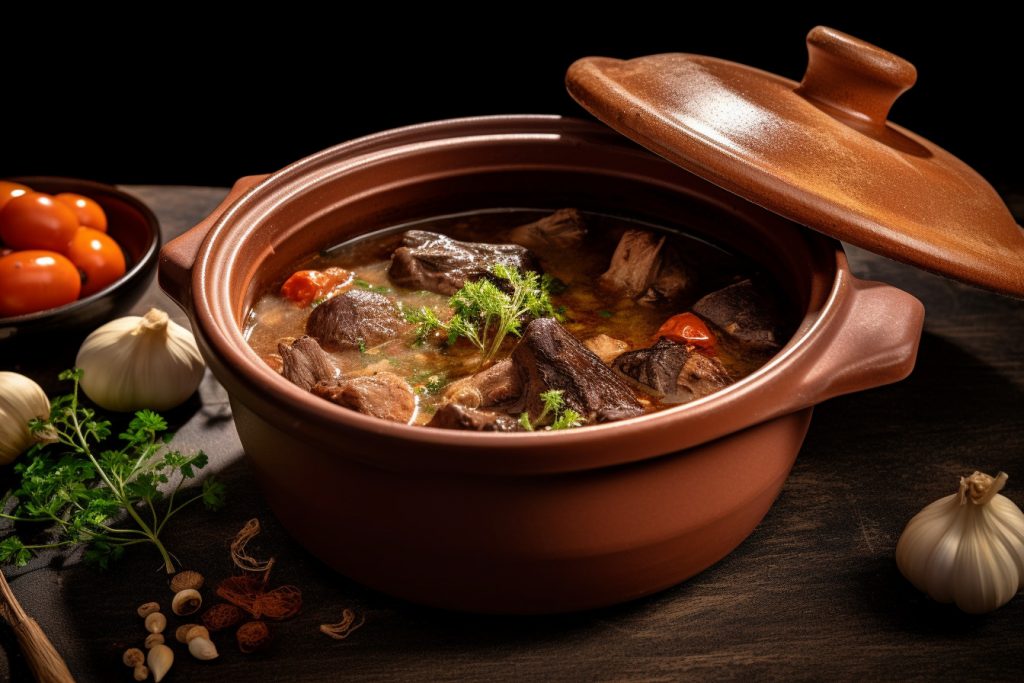
A clay pot can be a rustic and adequate substitute for a Dutch oven. Clay pots excel in moisture retention, ensuring that dishes remain succulent and flavorful. Soak the pot in water before use to enhance its ability to release steam slowly.
Clay pots are particularly well-suited for slow-cooked stews, soups, and braises, capturing the essence of traditional, slow-cooked dishes.
- Price Range: $30-$150
- Temperature Limitations: Generally safe up to 400°F; requires careful temperature changes
- Size Comparison: A 3-quart clay pot approximates a 5-quart Dutch oven due to superior moisture retention
- Best For: Dishes that benefit from gentle, moist cooking
- Where to Get It: It’s available on Amazon in this category
Recommended Recipes:
Comparison Chart: Finding Your Perfect Dutch Oven Alternative
| Alternative | Stovetop Safe | Oven Safe | Price Range | Heat Retention | Good for Bread | High Heat Searing |
|---|---|---|---|---|---|---|
| Slow Cooker | No | No (base only) | $30-$150 | Excellent | No | No |
| Braiser | Yes | Yes (500°F) | $80-$350 | Excellent | Limited | Yes |
| Cast Iron Skillet | Yes | Yes (500°F+) | $20-$200 | Excellent | Yes | Excellent |
| Casserole Dish | No | Yes (450°F) | $15-$80 | Good | Limited | No |
| Enamel Cast Iron | Yes | Yes (450-500°F) | $50-$400 | Excellent | Yes | Good |
| Soup Pot | Yes | Yes (500°F) | $40-$200 | Moderate | Limited | Moderate |
| Clay Pot | Limited | Yes (400°F) | $30-$150 | Excellent | No | No |
Why You Need a Dutch Oven
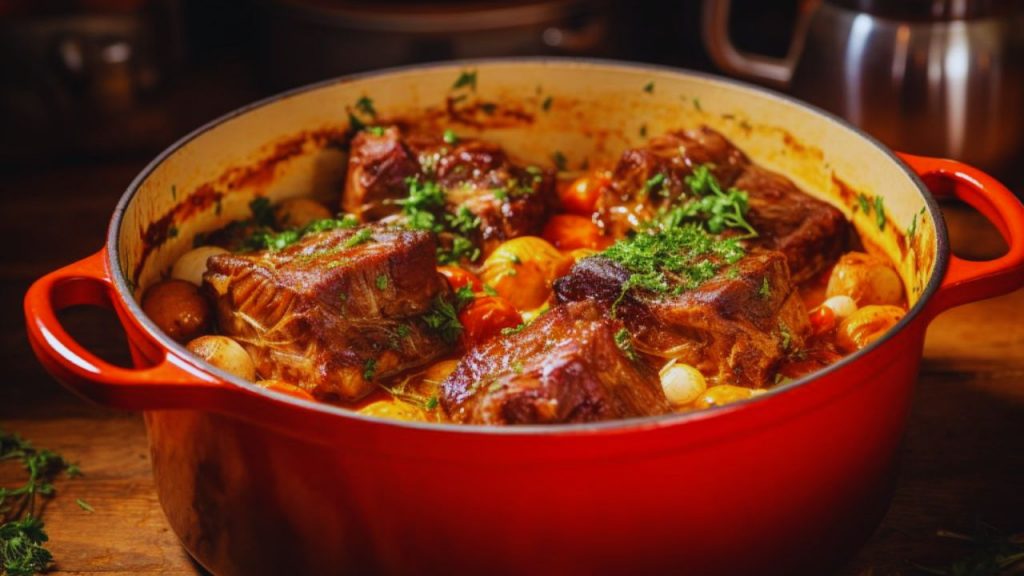
While looking into alternatives to the Dutch oven is beneficial, it’s also crucial to understand why this kitchen staple has withstood the test of time and remains a favorite among home cooks and professional chefs.
Versatility
The Dutch oven‘s versatility is unmatched. Its ability to seamlessly transition from stovetop to oven makes it a go-to for different cooking methods. It can handle everything, whether you are searing, braising, simmering, frying, roasting, or baking.
Even Heat Distribution
The Dutch oven‘s thick walls and heavy lid ensure that heat is evenly distributed, creating a consistent cooking environment. Hence, it is perfect for slow-cooking dishes that require low, steady heat over an extended period.
Durability
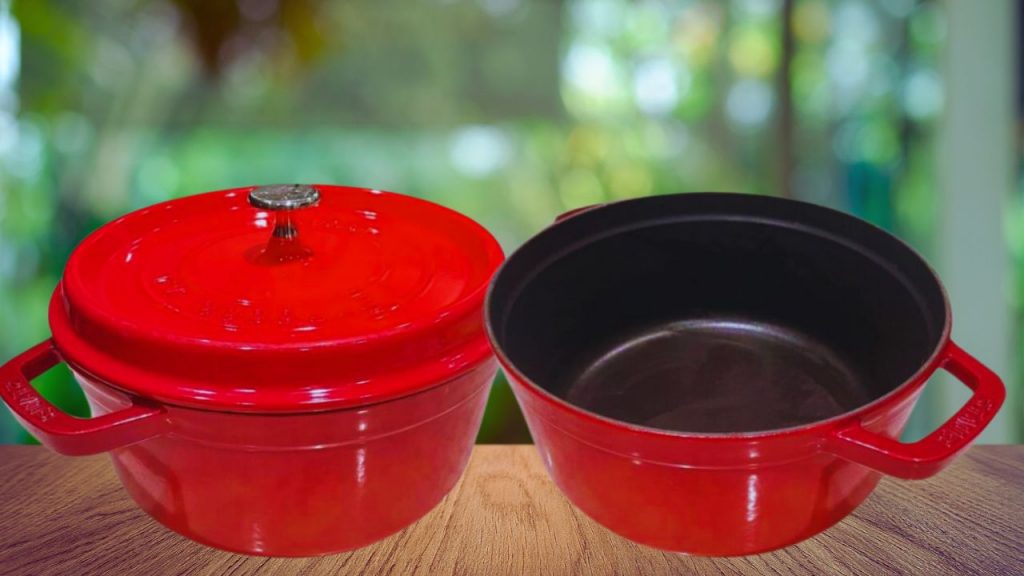
Dutch ovens are built to last. Since they are typically made from cast iron or enamel-coated cast iron, they are incredibly durable and can withstand high temperatures. The longevity of a Dutch oven makes it a worthwhile investment for those looking to build a reliable and long-lasting kitchen arsenal.
One-Pot Wonders
The Dutch oven‘s size and design allow for the creation of hearty, one-pot meals. Whether you’re crafting a savory stew, a comforting soup, or a mouthwatering pot roast, the Dutch oven’s ample space accommodates a variety of ingredients, simplifying the cooking process and minimizing the need for multiple pots and pans.
Enhanced Flavors
The Dutch oven‘s tight-fitting lid traps moisture and creates a self-basting environment. This unique feature ensures that the flavors are locked in, resulting in rich dishes that are tender and bursting with taste. The slow-cooking nature of the Dutch oven allows for the melding of flavors and the development of complex tastes that are hard to achieve with other cooking methods.
Conclusion
There are plenty of alternatives to the beloved Dutch oven, each with unique advantages. While these alternatives showcase their own merits, it’s essential to appreciate the unparalleled qualities that make the Dutch oven a kitchen essential.
Whether you opt for a Dutch oven or one of its alternatives, the key is to embrace the joy of experimentation in the kitchen and discover the endless possibilities each piece of cookware brings to your dishes.
Chef Bradley Thompson highly recommends to check his list of the best Dutch ovens.

